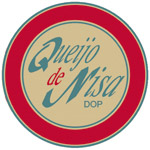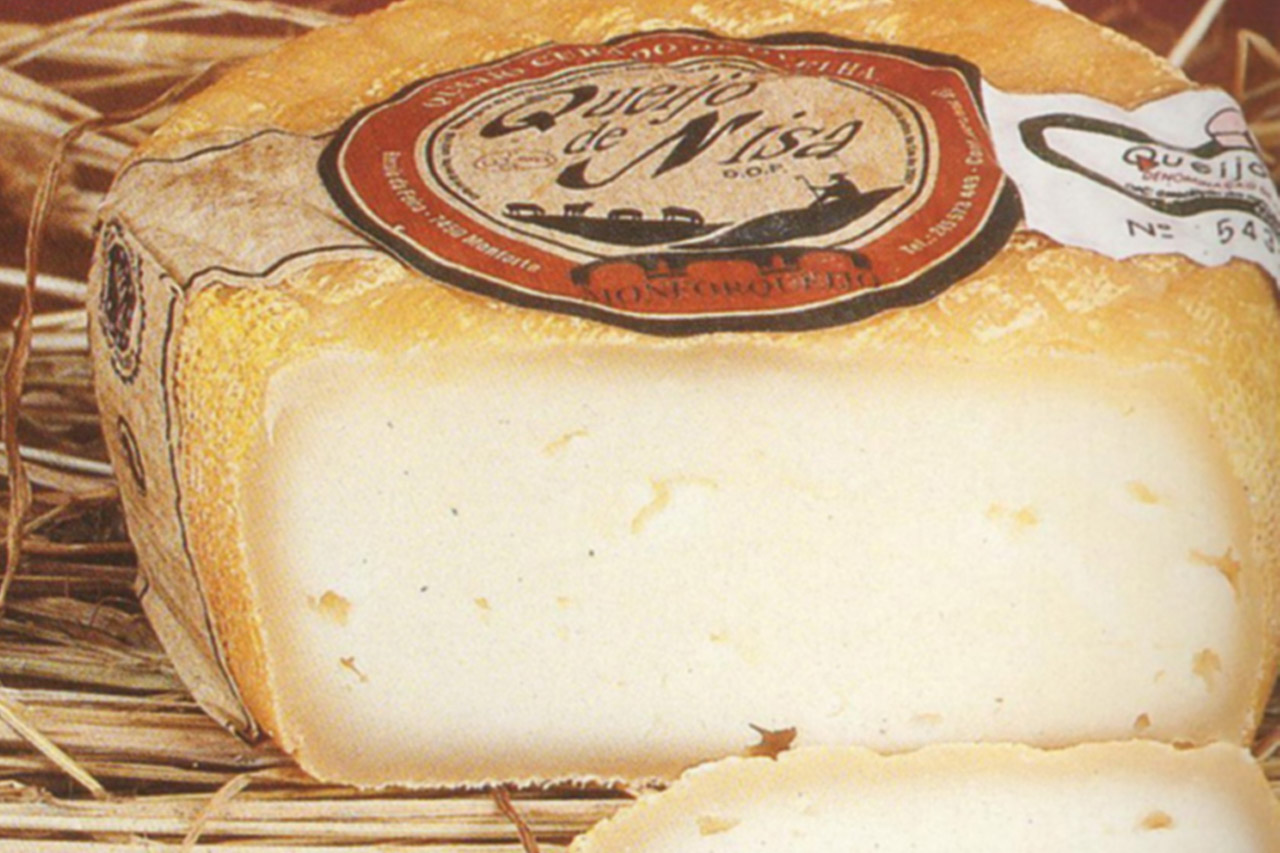Description
The Queijo de Nisa PDO is a mature cheese made from the milk of the Merino breed of sheep. It has a semi-hard consistency and is only made in the traditional, local way.
Production Area
Queijo de Nisa PDO cheese is made in the municipal areas of Nisa, Crato, Castelo de Vide, Marvão, Portalegre, Monforte, Arronches and Alter do Chão, in the Portalegre district.
Production Method
The milk is coagulated with an infusion of Cynara cardunculus, a local, naturally occurring plant of the Cardoon family, for 45 to 60 minutes at a temperature of 25°C to 28°C. The curd is placed in the moulds and pressed by hand to remove all the whey. The cheese is then salted and ripened in a controlled climate. Maturing is divided into two phases. In the first phase, which lasts about 15 to 20 days, the cheeses are kept in their moulds at a temperature of between 8°C and 10°C and a humidity of 85% to 90%. The second phase lasts 30 to 40 days, the temperature is 10°C to 14°C and the humidity is 90% and in this case the cheeses are removed from their moulds. At the end of these two phases the cheeses are finally ready.
Appearance and Flavour
Queijo de Nisa PDO is a semi-hard cheese with a compact consistency, very pale yellow in colour and with very small air bubbles. It is cylindrical in shape with well defined borders. The rind is hard and either smooth or slightly wrinkled. The taste is a little acidic.
History
Queijo de Nisa PDO cheese has been well-known in the Alentejo region for some time, long enough for it to have been described in a book written in 1901 by Antonio Maria Horta Camões. It has been part of the lives of the Alentejo people in the Portalegre area as long as can be remembered, used as it was as a basic and important source of protein in what was a generally poor diet.
Gastronomy
Queijo de Nisa PDO cheese must be stored at a temperature of between 0°C and 10°C. It is ideal with a slice of crusty fresh bread and a glass of good red wine, especially the best of the Portalegre wines. It is eaten as a snack during the day time or at meal times, either by itself or as an ingredient, such as in the case of Quiche de Legumes com Queijo de Nisa, a savoury tart made with carrots, courgettes and cheese.
Marketing
This cheese is sold as Queijo de Nisa PDO in snack sized portions, merendeira, of between 100 gr and 400 gr or in the normal form weighing between 800 gr and 1.300 gr. It is sold loose or prepacked in cling film clearly labelled, bearing a seal of guarantee and its PDO certification.
Distinctive Features
At present Queijo de Nisa PDO cheese is only made by 20 to 30 local cheese makers (queijarias), who are however famous throughout the country for the quality of their cheeses, which are artisan made in family concerns.







